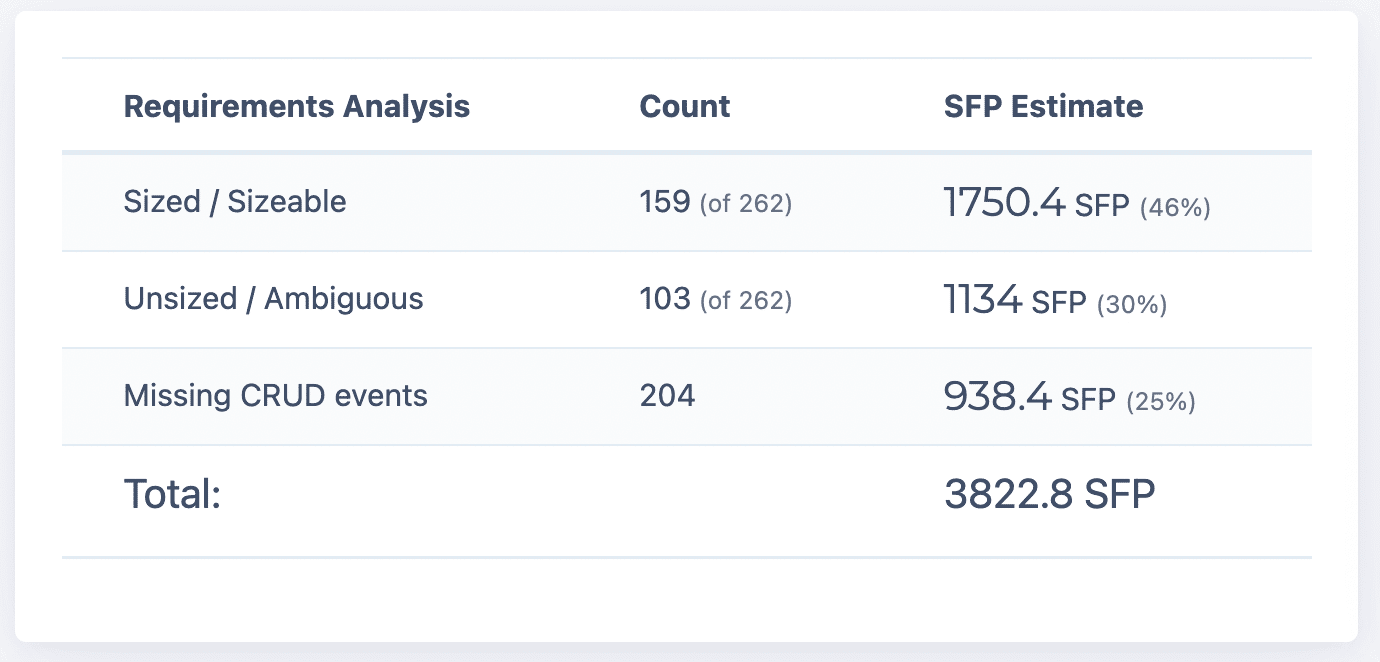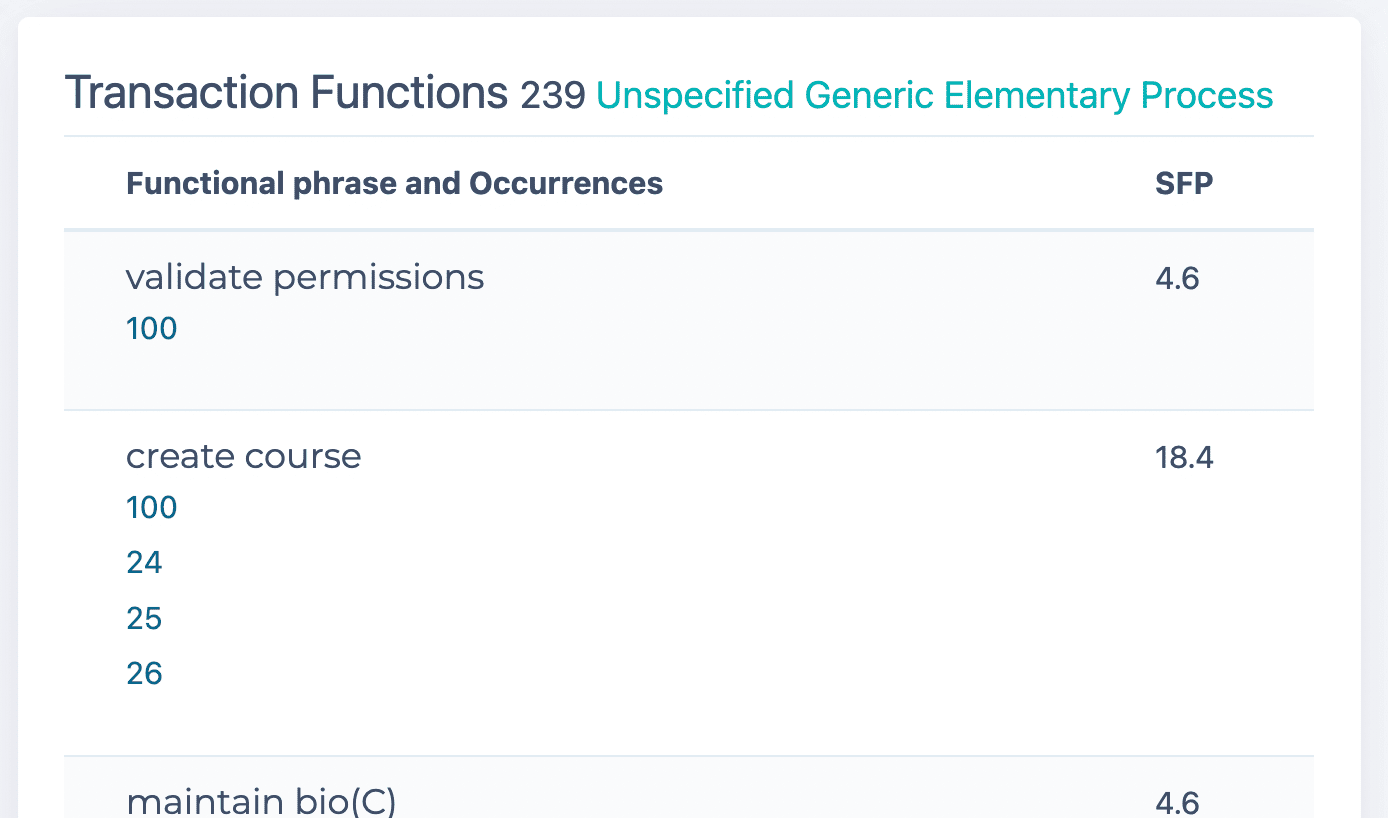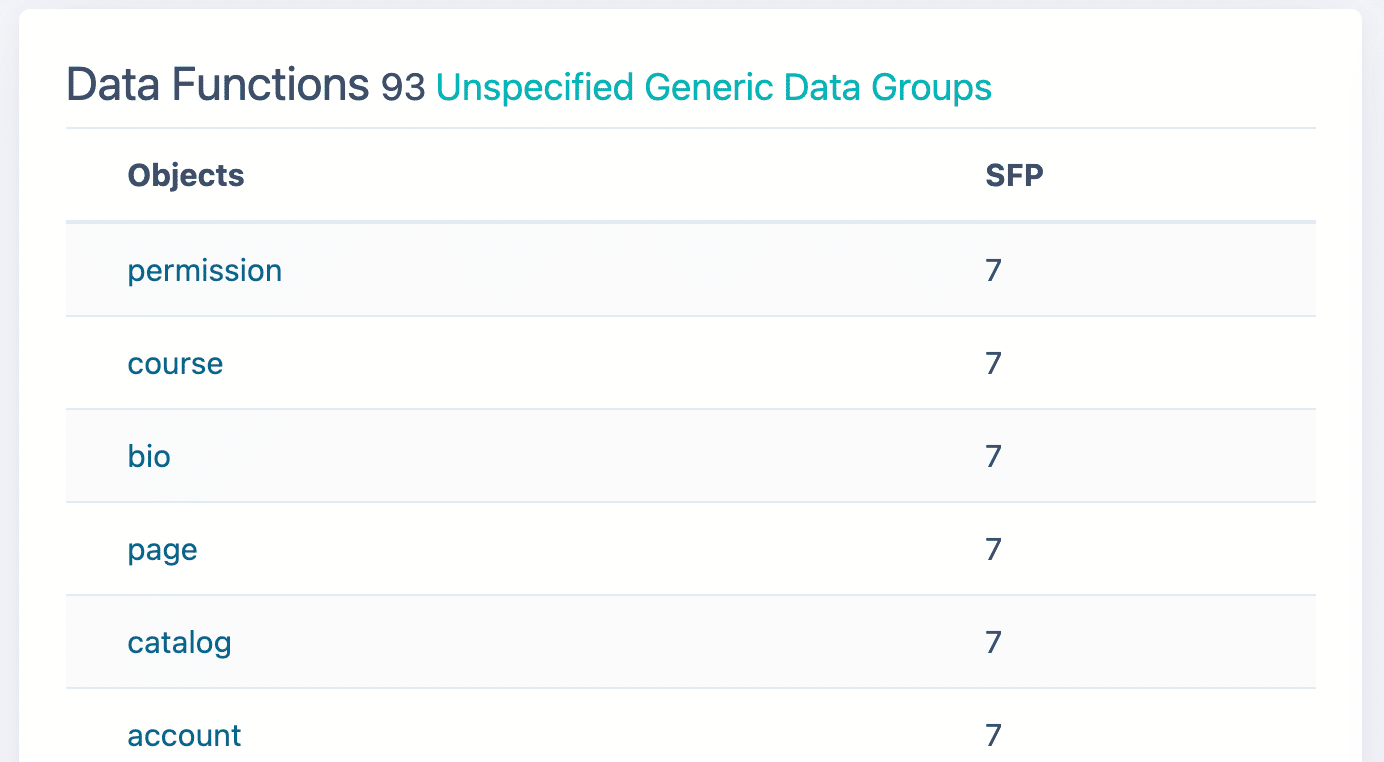What are Simple Function Points
Simple function points (SFP) are a quick-to-learn and quick-to-use software functional size estimation technique. The fundamentals of SFP are aligned with first generation IFPUG function points, less precise but quicker to get a first estimate. SFP are an approximation of IFPUG FP by treating all data functions as average in size. This simplification means there is no need to know all data element types (DETs) nor Record Element Types (RETs) , it treats all object types as equivalent in size and complexity. A similar approach is applied to the Data Transactions, these too are all treated as equivalent in size. The combination of these two short cuts, makes SFP to be a fast way to estimate the size of any system.
ScopeMaster® automates sizing in SFP (as well as IFPUG and COSMIC Function Points).
Early Sizing with SFP
One of the problems with traditional IFPUG sizing (although not a problem for COSMIC) is that the information required to count function points according to the rules is often not available at the stage when knowledge of the size is most important. SFP is a simplified sizing technique designed to address this problem. They are a simplified approach to estimating IFPUG function points. SFP have grown in popularity in the last two years, especially in the USA.
The concepts are the same as IFPUG but the analysis required is far less detailed and much faster to perform. SFP sizing does not require the level of detail necessary for an IFPUG count. However SFP is not an ISO standard, unlike IFPUG FP and COSMIC FP.

ScopeMaster does it for you.
ScopeMaster analyses written software requirements or user stories to determine the functional intent and functional size. It then generates SFP estimates to help you size and plan your software endeavour.
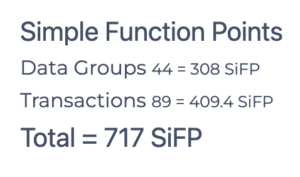
When determining an SFP count, it is essential to correctly identify the data groups being maintained by the software. If the requirements are young or incomplete, we might have to anticipate from a single reference to an object type that it is intended to be fully maintained data. ScopeMaster assesses the occurrence of each transactional object as a legitimate data group.
Simple Function Points – Automated
ScopeMaster does the heavy lifting.
ScopeMaster can analyse and size an entire backlog of hundreds or even thousands of user stories effortlessly.
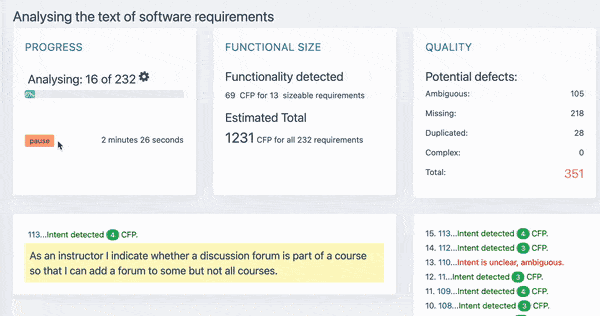
The Results
From these automated simple function point estimates, you can also spot how to refine your requirements which in turn will help to improve the accuracy of your size estimate.
Simple Function Point analysis API
ScopeMaster also makes available its Simple Function Point analysis results via the REST API. Checkout the documentation here.
Further reading: here’s a useful description of Simple Function Points by the folks at QSM. And here is the introduction to SFP by IFPUG who are the guardians of the method.
Simple Function Points vs Alternatives
There are really only two viable alternatives to SFP when sizing software, they are full IFPUG function points and COSMIC Function Points.
Full IFPUG function points look at more detail than SFP, notably, for IFPUG FP
- IFPUG considers the number of item attributes (DETS) to determine complexity
- IFPUG considers the record element types of ILFs to determine complexity
- Complexity of the function (both data and transaction) impacts on the functional size
The COSMIC sizing methodology builds on the insightful original ideas of Allan Albrecht and his creation of IFPUG. It addresses some of the weaknesses of IFPUG in the following areas:
- COSMIC is principle-based and requires no adaptation for different types of software.
- COSMIC allows you to size from incomplete knowledge of requirements
- COSMIC tends to have a higher correlation to effort than alternatives.
- COSMIC is easier to learn and automate.

